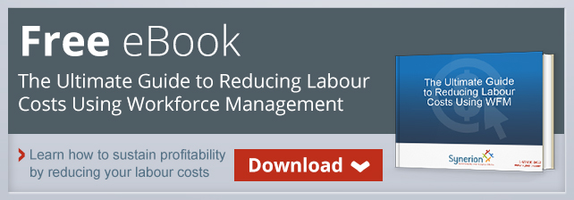
Employee scheduling is never the most glamorous part of anyone’s role, but it’s as important as any other job function. If this statement evokes skepticism for you, here’s some food for thought:
- Payroll is often the highest cost incurred by businesses, and improper or sloppy employee timetables contributes to it rising
- Particularly in organizations working in shifts, employee stationing can affect productivity, performance, employee satisfaction, as well as profitability
- Payroll errors, including improper compensation, as well as over and under-staffing often result from poor employee organizing
When you consider the above, the creation of accurate, efficient employee schedules becomes a higher priority, especially since improvements in staffing can positively impact your bottom line. To this end, we’re going to discuss different approaches to creating an employee timetables, and why reconsidering your current practices may be a good idea for your business.
The Traditional Way: Paper Processes
Some businesses still coordinate employee timetables using manual, paper-based processes. In this format, schedules can be as simple as a chart with work hours written under employee names, or it can involve more detailed information such as the duties each employee is able to perform, allocated breaks, shift changes and the like.
Pros – Paper based employee timetables are the cheapest, least complex employee organizational method. Many retail locations and restaurants find the paper method useful, as employees can write down their availability and preferred shifts.
Cons – There are inherent disadvantages to paper based employee organization. The most obvious is the time it takes to take on such a project, particularly as the number of staff grows and organization becomes more complex. Then there is reconciling employee time sheets, accounting for overtime, determining proper compensation, etc. With manual paper-based employee schedules, there is a high risk of human error which could lead to more serious issues, such as noncompliance with labour regulations, over-compensation or under-compensation, and more.
Using Excel and Other Programs
Many use Excel or word processing programs to create employee timetables. While a bit more dynamic than paper processes, this method shares many of the disadvantages inherent to paper processes.
Pros – Electronic organization via spreadsheets or documents allow for multiple people to access the programs, which are more easily modified than paper schedules. With employee timetables created in Excel, you can also add formulas to help determine totals for hours worked and compensation, which helps automate some of the more time-intensive administration work inherent to paper schedules.
Cons – That said, a lot of manual data entry and administration is still required, which can eat up time and resources. Furthermore, it can be difficult to manage employee timetables efficiently depending on the complexities involved and the size of the organization. This can lead to a number of mistakes and complications in the employee scheduling process, which can land you in hot water down the road.
Employee Scheduling Software
Employee organizational software helps you maintain tight control over employee organization, planning and execution. By automating manual processes that are error-prone, it facilitates planning, setup, as well as monitoring of staffing to ensure adequate work coverage, prevention of employee issues, and that all staffing requirements are met.
Pros – The benefits of employee scheduling software include:
- Elimination of payroll errors
- Reduction of labour costs
- Risk reduction and improved labour regulation compliance
- Automated alerts to identify issues and warn you of when corrective action needs to be taken
- Real time information that can be pushed to multiple devices, including smartphones
Cons – Employee organization software is typically more expensive than the other two methods discussed. Additionally, if your organization is moving from paper or Excel-based timetables, there will be a transitional period to work out the kinks (which is typical when any new process is introduced). That said, once the system has been implemented effectively, the cost benefits you receive will far surpass the initial investment.
In the end, employee scheduling software is the most efficient way to create and manage employee organization. By improving employee planning processes, you can reduce errors and inefficiencies that are costing your company money, which can ultimately improve your bottom line.
